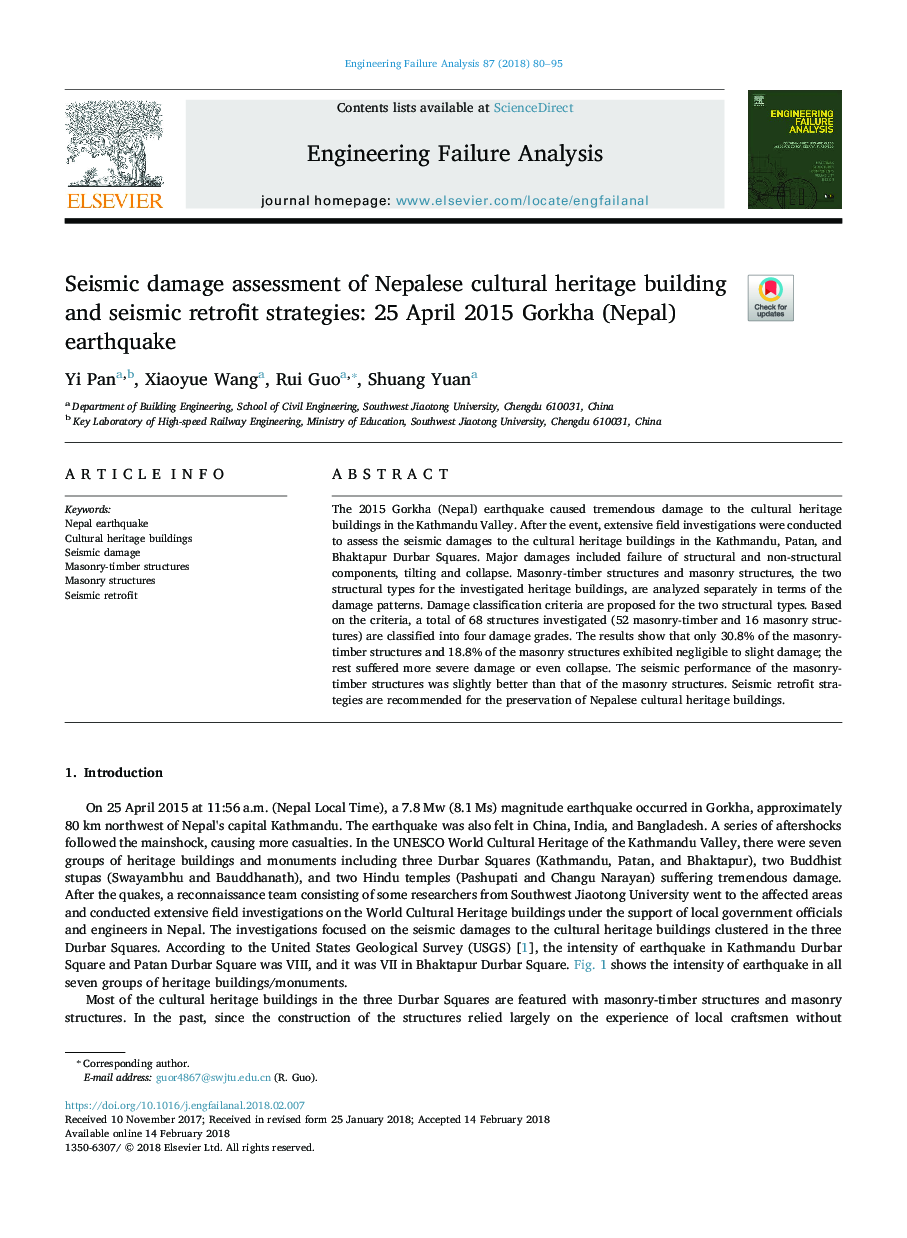| Article ID | Journal | Published Year | Pages | File Type |
|---|---|---|---|---|
| 7167538 | Engineering Failure Analysis | 2018 | 16 Pages |
Abstract
The 2015 Gorkha (Nepal) earthquake caused tremendous damage to the cultural heritage buildings in the Kathmandu Valley. After the event, extensive field investigations were conducted to assess the seismic damages to the cultural heritage buildings in the Kathmandu, Patan, and Bhaktapur Durbar Squares. Major damages included failure of structural and non-structural components, tilting and collapse. Masonry-timber structures and masonry structures, the two structural types for the investigated heritage buildings, are analyzed separately in terms of the damage patterns. Damage classification criteria are proposed for the two structural types. Based on the criteria, a total of 68 structures investigated (52 masonry-timber and 16 masonry structures) are classified into four damage grades. The results show that only 30.8% of the masonry-timber structures and 18.8% of the masonry structures exhibited negligible to slight damage; the rest suffered more severe damage or even collapse. The seismic performance of the masonry-timber structures was slightly better than that of the masonry structures. Seismic retrofit strategies are recommended for the preservation of Nepalese cultural heritage buildings.
Related Topics
Physical Sciences and Engineering
Engineering
Industrial and Manufacturing Engineering
Authors
Yi Pan, Xiaoyue Wang, Rui Guo, Shuang Yuan,
